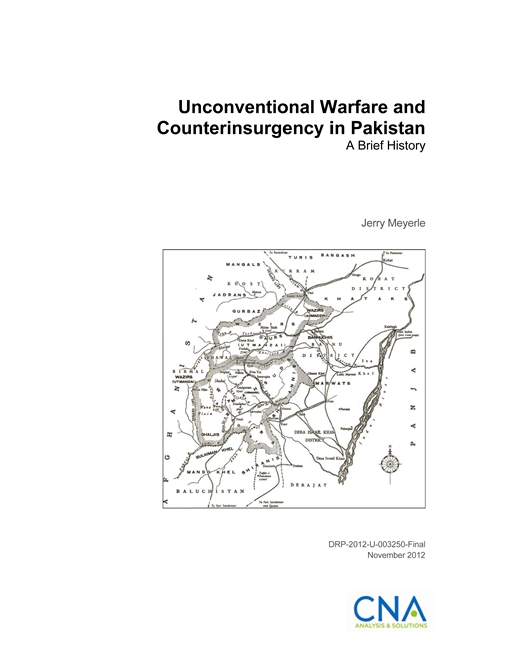Since Pakistan’s creation in 1947, the country’s leaders have relied on Islamic guerrillas as a “low-cost, high-return” means of achieving stra- tegic objectives. Religious militants of varying persuasions developed an enormous infrastructure across Pakistan, as a result of state pat- ronage and a permissive environment. The Pakistani government in- tended them in part to serve as a third line of defense against India and as a source of leverage and regional influence. The “jihadis,” as they are often called in Pakistan, defeated the Soviet army in Afghan- istan in the 1980s, helped ensure a compliant government in Afghan- istan during the late 1990s, pushed Pakistan’s claims to the disputed state of Kashmir, and tied down hundreds of thousands of Indian troops for almost two decades. Few militaries in history have engaged in unconventional warfare – i.e., covert support to non-state militant groups against the security forces of other countries – for so long, on such a large scale, and so close to home.
In the last ten years Pakistani leaders have reconsidered this policy and moved to shut down large parts of the “jihadi infrastructure.” They have done this gradually – some might say reluctantly and only partially – as a result of intense U.S. pressure, the development and spread of a Taliban-inspired insurgency against the Pakistani state, and growing terrorist attacks in major Pakistani cities. The Pakistani military has launched numerous operations along its frontier with Afghanistan and cracked down on a number of militant groups in the country’s heartland. Thousands of soldiers and paramilitaries have been killed in these operations. These efforts have considerably weakened the Taliban-inspired insurgency in Pakistan, yet it remains a potent force.
Much of Pakistan’s approach to counterinsurgency involved using military operations to put pressure on various Taliban factions and the tribes that supported them, followed by overtures of peace. The Pakistani government sought to co-opt as much of the insurgency as possible – to persuade tribesmen who had joined the Taliban to cease attacks inside Pakistan, while making agreements with those who remained focused on fighting U.S. and NATO forces in Afghanistan. Those groups that refrained from violence inside Pakistan were, for the most part, given free rein to operate across the border in Afghanistan.
This paper traces the history of the Pakistani government’s support to various militant groups since 1947 and its efforts against some of these organizations, with a focus on the 2001-2012 period. The report is largely descriptive and empirical. It identifies major currents in Pakistan’s strategic thinking in regard to various militant organizations over time, the evolving nature of these groups, and major operations against them in the last 10 years. It concludes with implications for the draw-down of Western forces in Afghanistan.
Download reportCleared for public release. Distribution Unlimited.
Details
- Pages: 56
- Document Number: DRP-2012-U-003250-final
- Publication Date: 11/30/2012
